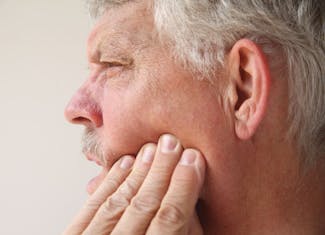
What is a balance disorder?
A balance disorder is a condition that makes you feel unsteady or dizzy. If you are standing, sitting, or lying down, you might feel as if you are moving, spinning, or floating. If you are walking, you might suddenly feel as if you are tipping over.
Everyone has a dizzy spell now and then, but the term "dizziness" can mean different things to different people. For one person, dizziness might mean a fleeting feeling of faintness, while for another it could be an intense sensation of spinning (vertigo) that lasts a long time.
Experts believe that more than four out of 10 Americans, sometime in their lives, will experience an episode of dizziness significant enough to send them to a doctor. Balance disorders can be caused by certain health conditions, medications, or a problem in the inner ear or the brain. A balance disorder can profoundly impact daily activities and cause psychological and emotional hardship.
What are the symptoms of a balance disorder?
If you have a balance disorder, you may stagger when you try to walk, or teeter or fall when you try to stand up. You might experience other symptoms such as:
- Dizziness or vertigo (a spinning sensation)
- Falling or feeling as if you are going to fall
- Lightheadedness, faintness, or a floating sensation
- Blurred vision
- Confusion or disorientation.
Other symptoms might include nausea and vomiting, changes in heart rate and blood pressure, and fear, anxiety, or panic.
Symptoms may come and go over short time periods or last for a long time, and can lead to fatigue and depression.What causes balance disorders?
There are many causes of balance problems, such as medications, ear infections, a head injury, or anything else that affects the inner ear or brain. Low blood pressure can lead to dizziness when you stand up too quickly. Problems that affect the skeletal or visual systems, such as arthritis or eye muscle imbalance, can also cause balance disorders. Your risk of having balance problems increases as you get older.
Unfortunately, many balance disorders start suddenly and with no obvious cause.
Common Diagnoses We Work With Include:
- Central Nervous System Disorders
- Neuropathy
- Age-Related Balance Dysfunction
- Oculomotor (Visual) Dysfunction
- Benign Paroxysmal Positional Vertigo (BPPV)
- Labyrinthitis
- Ménière's Disease
- Vestibular Neuronitis
- Muscle Atrophy
- Nerve Injuries
Temporomandibular Disorders (TMD)

Temporomandibular disorder (TMD), is a term that describes an entire group of disorders involving the temporomandibular joint or joints (TMJ).
The TMJs are the jaw joints. There is one on each side of your head just in front of your ear canals. Like many other joints in the body, they consist of:
- Muscles that control joint movement,
- Ligaments that hold the bones together,
- Cartilage that provides a smooth surface for the bones to move on,
- A disc that helps with proper movement, of the bones,
- Elastic tissue that helps hold the disc in place.
One or more of the above tissues can cause symptoms. In fact, studies suggest that one third of the population at any one time experiences TMJ symptoms such as pain with chewing, yawning, or jaw opening. Women seem to have TMJ problems much more often than men and it is estimated that 3-6% of the population might benefit from treatment.
There are a variety of temporomandibular disorders. The muscles (myogenous), joint(s) (arthrogenous), or a combination of the two may cause pain.
Since physical therapists treat muscle and joint problems, they are ideally suited to address a TMD. Moreover, a majority of patients diagnosed with TMD, also have associated neck pain. Both respond well to treatment provided by a physical therapist. No other healthcare practitioner is better suited to address both the TMD and neck pain.
TMD may appear to be a complex condition and it shouldn't be. This website and your physical therapist can help to insure the following:
- You are properly educated,
- that your treatment is conservative, cost-effective, and reversible, goals are realistic,
- your examination is brief and meant to identify your source(s) of pain.
When a physical therapist performs the examination, they will be able to classify you as having one or more of the following:
- An inflammatory condition
- Limited jaw range of motion
- Excessive jaw range of motion
- Arthrogenous Disc Displacement
- Jaw muscle pain
- Neck pain causing related headaches (sometimes mistaken as TMD)
Once the involved structures are identified, the therapist will be able to provide you with the appropriate treatment.
If you would like to learn more about how our TMJ specialists can help you out, please give us a call.
Call us today to learn more about how we can develop a personalized treatment program for your balance problems and help you get back to enjoying a higher quality of life.
Reference: https://www.MoveForwardPT.com
